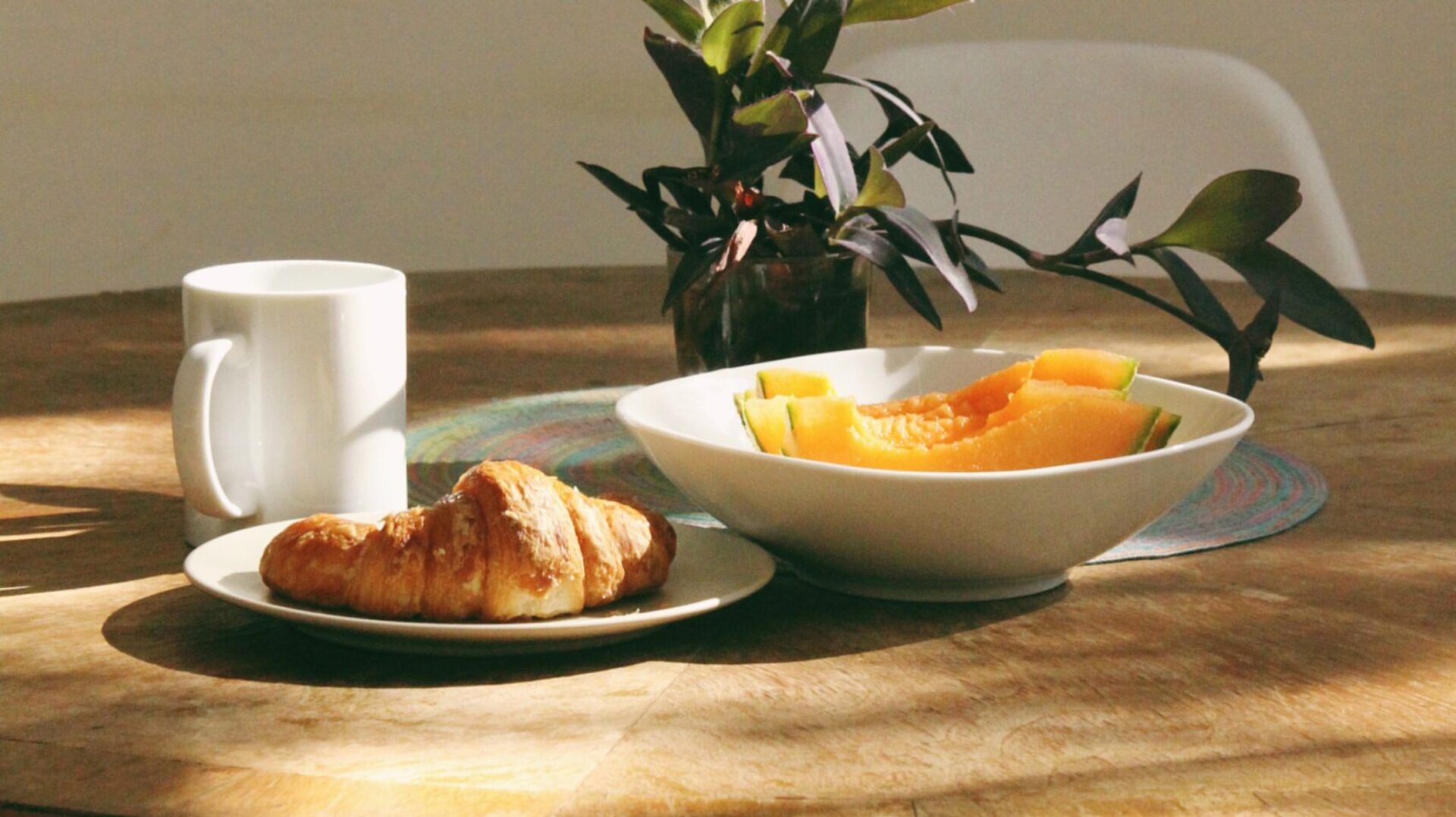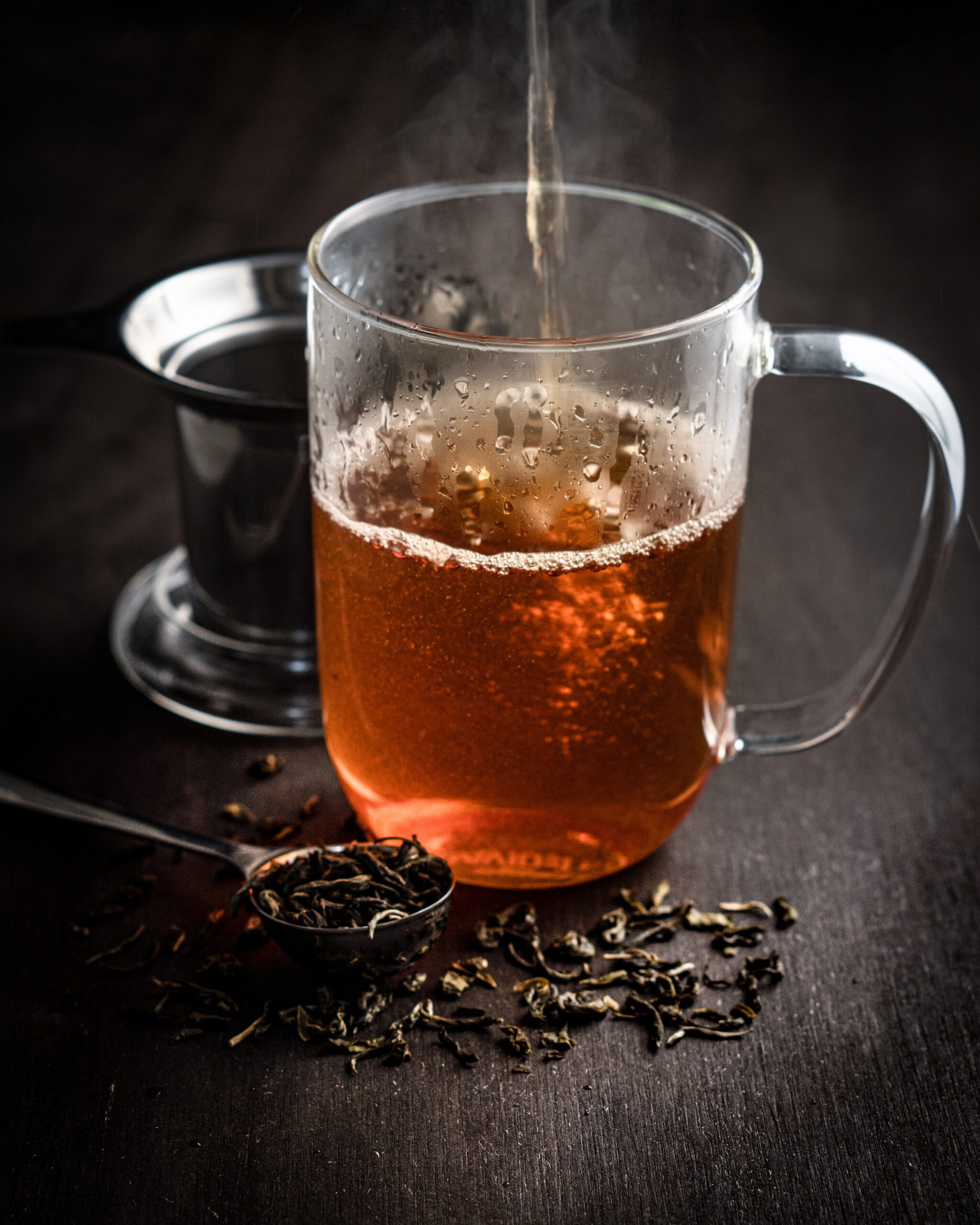Black Tea – is a beverage steeped in history and tradition and enjoyed by people all over the world. Let’s explore what makes black tea special and discover its varieties and significance in different cultures.
Originating from the leaves of the Camellia sinensis plant, black tea has a robust flavor profile that ranges from malty and earthy to more delicate and flowery. To produce black tea, the tea leaves are picked, withered to reduce moisture content, rolled to release enzymes, and then fully oxidized. Oxidation is a chemical reaction that darkens the leaves and changes their flavor profile, resulting in a robust and bold taste. After oxidation, the leaves are dried to stop the process. The wide range of black tea is influenced by factors such as the tea plant variety, growing conditions, processing methods, and harvesting practices.
Both single-origin black teas and black tea blends have their own popularity and appeal, and the preference between the two can vary depending on individual tastes and cultural traditions. Let’s explore the characteristics of both single-origin black teas and black tea blends:
Single-origin black teas are sourced from a specific tea estate or region, allowing tea enthusiasts to experience the unique flavors and characteristics of that particular area. These teas often reflect the terroir of the region, including factors like soil, climate, and altitude. Single-origin black teas are appreciated for their purity and the opportunity they provide to explore the nuances of tea from a specific place:
- Darjeeling: Often referred to as the “Champagne of Teas,” Darjeeling black tea is grown in the Darjeeling region of India. It offers delicate flavors, floral aromas, and a muscatel taste. Darjeeling teas are harvested in different flushes (periods of growth), each with its unique character.
- Assam: Grown in the Assam region of India, Assam black tea is known for its robust, malty flavor. It’s often used in breakfast blends and is a popular choice for those who prefer strong, bold teas.
- Keemun: A Chinese black tea with a distinctive winey and fruity flavor. Keemun teas are often smooth, with a slightly smoky note, making them highly regarded among black tea enthusiasts.
- Yunnan: From the Yunnan province in China, Yunnan black teas are made from the large-leaf Camellia sinensis var. assamica plants. They have a sweet and honey-like flavor with subtle hints of malt.
- Ceylon: Grown in Sri Lanka, Ceylon black teas come in various grades and elevations, each offering different flavor profiles. They are generally known for their bright and brisk taste.
- Golden Monkey: A Chinese black tea made from young tea buds and leaves. It has a sweet and malty flavor with notes of caramel and chocolate.
- Lapsang Souchong: A unique Chinese black tea dried over pinewood fires, imparting a distinct smoky aroma and flavor. It is not for everyone but has a dedicated fan base.
- Nilgiri: Grown in the Nilgiri hills of India, Nilgiri black teas are often characterized by a smooth and balanced taste with subtle fruitiness.
- Nepal Black Tea: Nepal has been producing excellent black teas in recent years, with flavors ranging from delicate and floral to bold and robust.
- Taiwanese Sun Moon Lake: From the Sun Moon Lake region of Taiwan, this black tea is known for its complex and aromatic flavors.
Black tea blends involve combining different types of black teas or adding flavorings like fruits, spices, or flowers to create a distinct flavor profile. Blends are often crafted to achieve a specific taste, aroma, or effect. Classic examples include Earl Grey (black tea with bergamot oil) and Chai (black tea with spices). Blends can offer a delightful combination of flavors that might not be present in single-origin teas:
- English Breakfast: This is a classic and widely recognized black tea blend. It typically includes a mix of Assam, Ceylon, and Kenyan teas, resulting in a well-balanced and robust flavor. It’s often served with milk and sugar.
- Earl Grey: Another famous black tea blend, Earl Grey, is infused with the oil of bergamot oranges, giving it a unique and delightful citrusy aroma and flavor.
- Irish Breakfast: Similar to English Breakfast, but with a higher proportion of Assam tea, making it stronger and more robust. It’s often enjoyed with milk.
- Scottish Breakfast: A strong and full-bodied black tea blend that typically contains teas from Assam, Ceylon, and Kenyan regions. It’s meant to be a robust morning tea.
- Chai: While Chai can be made with various types of tea as a base, black tea Chai is particularly popular. It is brewed with spices like cinnamon, cardamom, ginger, cloves, and black peppercorns, often blended with milk and sweetener.
- Russian Caravan: A smoky black tea blend with a rich history. It was traditionally made by blending teas transported on camel caravans from China to Russia, acquiring a distinct smoky flavor from the campfires along the journey.
- Darjeeling blends: While Darjeeling tea is often enjoyed on its own, some blends combine Darjeeling with other teas to create unique flavor profiles.
- Lady Grey: A variation of Earl Grey, Lady Grey blend adds additional citrus flavors like lemon and orange to the bergamot-infused black tea.
- Jasmine Black Tea: This blend combines the floral aroma of jasmine flowers with black tea, resulting in a fragrant and enjoyable cup.
- Moroccan Mint: While Moroccan Mint can also be made with green tea, some variations use black tea as a base. It’s combined with fresh mint leaves and sweetened to create a refreshing and aromatic drink.
Black tea-drinking ceremonies are rooted in diverse cultures around the world, each with its own unique rituals, flavors, and traditions. What these ceremonies have in common is the ability to bring people together to enjoy the tea:
- United Kingdom – Afternoon Tea: The British have a famous tradition known as “Afternoon Tea” or “High Tea.” It is a social and cultural event that typically takes place between 3 pm and 5 pm. The ceremony includes serving black tea with milk, accompanied by a selection of finger sandwiches, scones with clotted cream and jam, and an assortment of pastries and cakes.
- India – Chai: In India, black tea is often referred to as “chai.” Chai is a beloved beverage and a significant part of Indian culture. It is typically made with black tea, milk, sugar, and a blend of spices like cardamom, cinnamon, cloves, and ginger. Chai is commonly served in small glasses, and the process of making and enjoying chai is deeply ingrained in daily life and social interactions.
- China – Gongfu Cha: While China is more well-known for its green tea culture, there are specific black tea-drinking ceremonies as well. In some regions, a traditional tea ceremony called “Gongfu Cha” is practiced, which involves the precise preparation and serving of black tea using small teapots and multiple steeping rounds.
- Turkey – Turkish Tea: In Turkey, black tea is a widely consumed beverage and is known as “çay.” The Turkish tea ceremony involves brewing strong black tea in a double teapot called a “çaydanlık.” The tea is served in small tulip-shaped glasses, often accompanied by sugar cubes.
- Eastern European Tea: In Eastern European countries, black tea is a significant part of their tea-drinking culture. The traditional Russian tea ceremony involves using a large, ornate teapot called a “samovar” to brew strong black tea. The tea is served in small glasses and is often accompanied by sugar, lemon slices, and various sweet and savory treats.
- Iran – Persian Tea: In Iran, black tea, known as “chai,” is a popular and integral part of daily life. The Persian tea ceremony involves brewing strong tea in a teapot called a “samovar” and serving it in small, handleless glasses called “estekans”. Tea is often accompanied by sugar cubes and sweets like baklava or dates.
- Egypt – Bedouin Tea: In Egypt, black tea is often referred to as “shay” and is enjoyed throughout the day. Bedouin tea is a traditional ceremony where black tea is brewed with fresh mint leaves and sometimes sweetened with sugar or honey.
Black tea is not only tasty but offers potential health benefits. Rich in antioxidants, it has been associated with heart health and cognitive function. The caffeine content, while generally lower than coffee, provides a gentle energy boost.
Brewing black tea is both a science and an art. The process involves boiling fresh water and pouring it over the tea leaves, allowing them to steep for a specific duration. Brewing black tea is a flexible process, and you can adjust the steeping time, water temperature, and other factors to find the perfect balance that suits your taste. With a little practice, you’ll be able to brew a cup of black tea that’s just right for you. I will write more details about the black tea brewing process in my next post.

